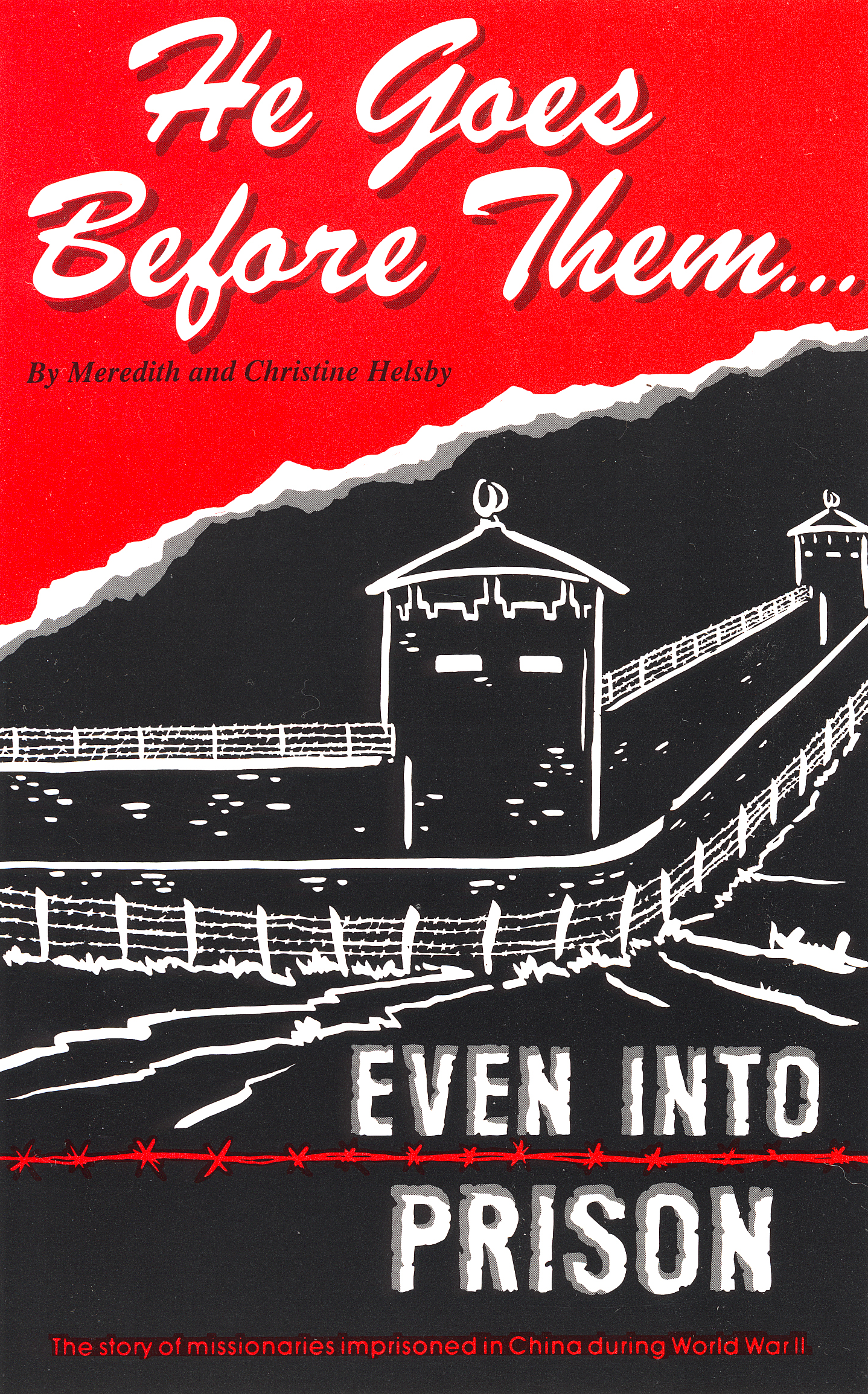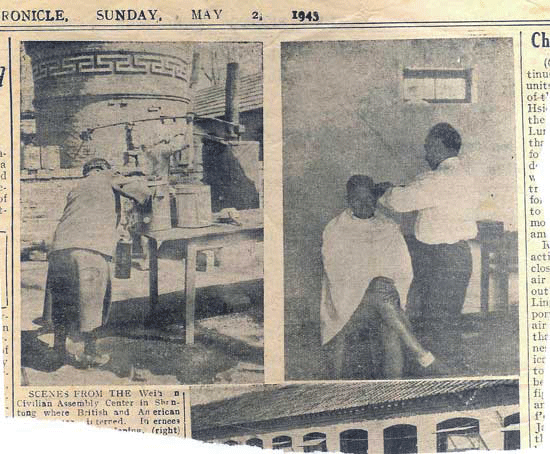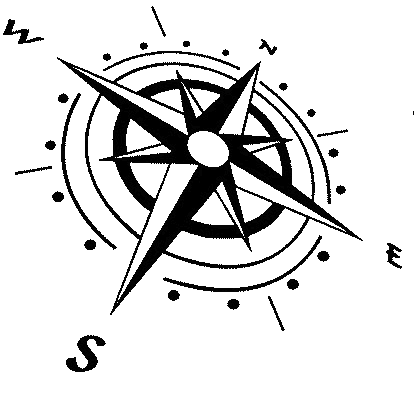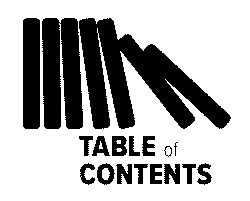
by Meredith and Christine Helsby
[excerpts] ...
[...]
 During our years in camp, news from the outside world came to us principally from three sources. The first was the Peking Chronicle, an English-language newspaper which old subscribers among the internees continued to receive. Under the Japanese puppet regime, this paper was strictly a propaganda vehicle with regular “news” of the U.S. fleet being dispatched to the bottom of the Pacific.
During our years in camp, news from the outside world came to us principally from three sources. The first was the Peking Chronicle, an English-language newspaper which old subscribers among the internees continued to receive. Under the Japanese puppet regime, this paper was strictly a propaganda vehicle with regular “news” of the U.S. fleet being dispatched to the bottom of the Pacific.
It did, however, serve one invaluable purpose. The progress of Allied Forces could easily be charted by noting names of Pacific Islands in which the Imperial Forces had enjoyed their most recent “triumph” The successive mention of the Marshall Islands, Manila, Iwo Jima and Okinawa told us of our troops’ approach to Japan. And when the Chronicle reported “Thousands of Allied bombers being shot down over Japan,” we felt certain that the end of the war was near.
A more reliable source of news was a fellow internee, a White Russian, who was a skilled radio technician and called upon to keep radios of Japanese officers in repair. After fixing the radios, he of course “tested” them and in the process was able to glean regular war news from Allied shortwave broadcasts.
The third source of information was the coolies who almost daily entered the compound to haul away garbage and empty the reeking cesspools.
These gentlemen, for obvious reasons, were given a wide berth by our guards. Significant news from Chinese guerilla bands in the area was carried into camp by these couriers, in their nostrils, mouths or concealed in the loathsome night soil kangs (drums).
As internees brought garbage to the coolies at the bins located in each housing area, small wads of paper bearing the precious inscriptions were surreptitiously transferred. Letters were also smuggled out of camp in airtight metal containers dropped into a barrel of fresh sewage!
#


http://www.weihsien-paintings.org/GordonHelsby/Helsby(WEB).pdf
#








